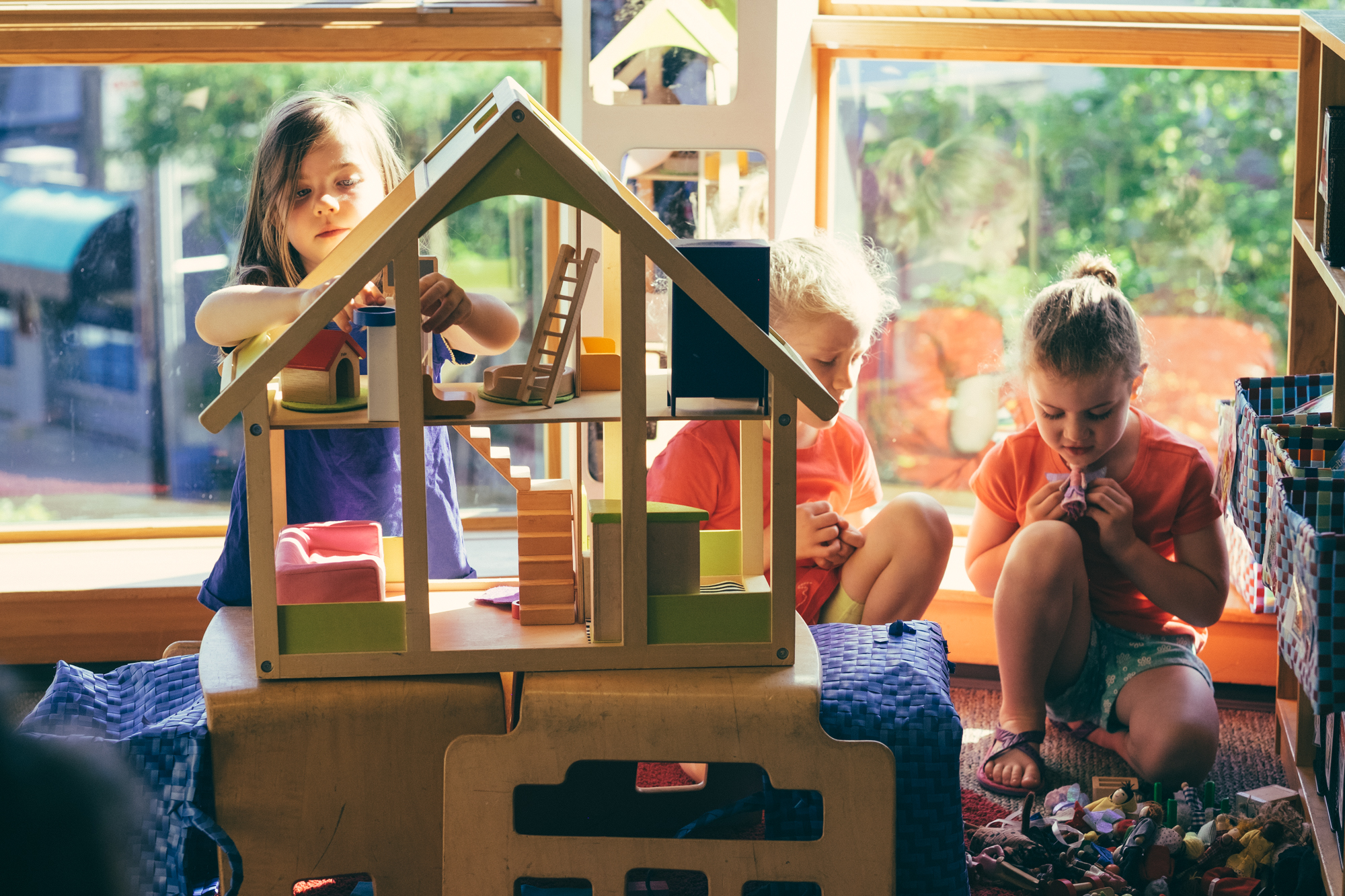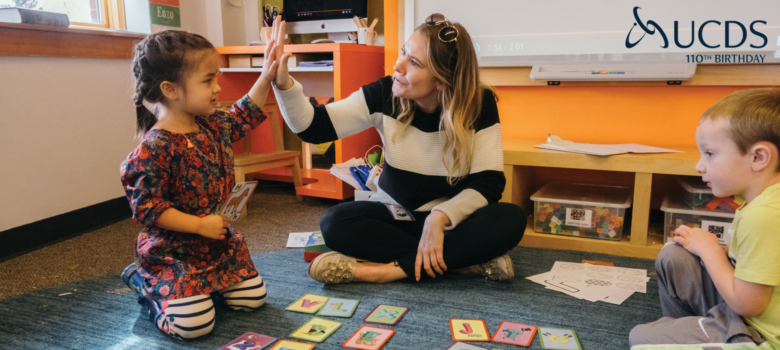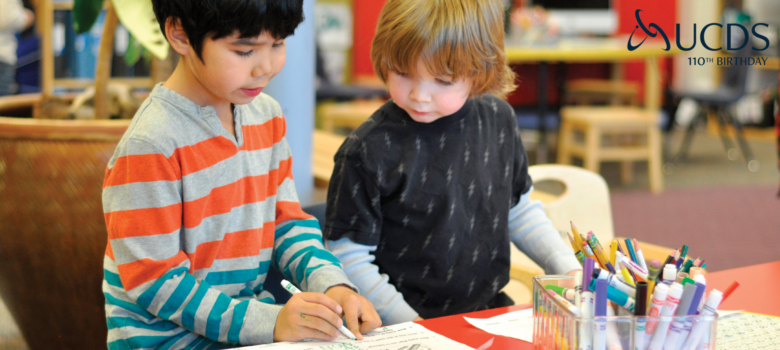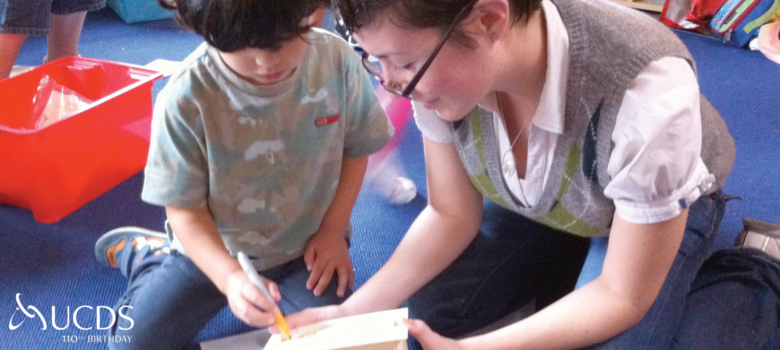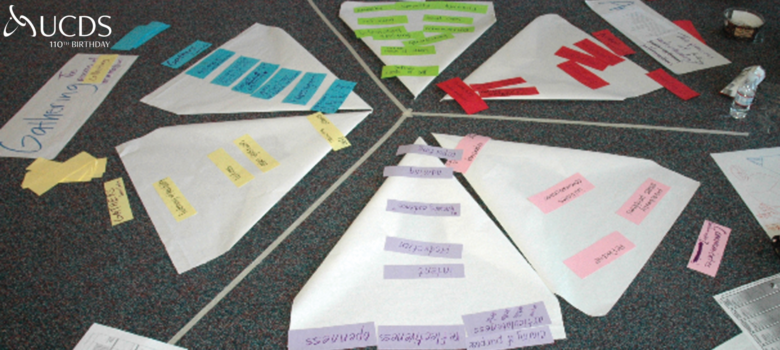by Jenn Drake, Early Elementary Teacher
When you enter a classroom at UCDS, the first thing you might notice is that children are talking with each other or moving about the room. The teacher might be hard to recognize at a table or on the floor with the students. I am often asked about this free-flowing atmosphere by prospective parents and teachers on tour, and I reply that it comes down to high-interest, engaging curriculum and the philosophy of non-directive classroom management.
To understand this philosophy, imagine the following scenario. It’s nearing the end of the morning and it is time to clean up. The teacher rings a bell and all students stop what they are doing to look at the teacher. She then says, “It is time to clean up. Put your folders and pencils in your desks and line up for recess.” This is a clear direction, and conventional wisdom would support that this teacher has successful classroom management skills!
Now imagine the same scenario – it’s five minutes before recess and the room needs to be cleaned up. This time, the teacher says, “I just noticed the clock and we are five minutes to recess!” Imagine the kids clean up their materials, gather their jackets, and head out the door. The classroom is just as well managed, but it’s through a non-directive technique because the teacher didn’t tell the children what to do.
In the non-directive classroom, teachers are operating under the assumption that their students are thoughtful, responsible, and respectful kids who care about their classroom community. These are kids who can be trusted to do the right thing. In an environment like this, students can feel that trust and know the teacher is counting on them to contribute and bring their best selves every day. This is entirely motivating! Not in the “now I’ll get a reward from the teacher” kind of way, but in a “yes, I am that great” kind of way. What we’re doing is building internal motivation.
You’re probably thinking that this is some kind of dream land where students are always cleaning up after themselves and holding the door for others and saying “please” and “thank you.” Let’s get real. Not every kid is motivated entirely by their own internal drive. Luckily it’s a skill that can be fostered through practice in an environment like this, where kids are given the chance to make up their own minds. When they feel like they are an important part of the community, they begin to make choices that support that community.
As I said, it isn’t always easy, and kids are bound to make mistakes. Someone is sure to leave a pencil behind and someone else will really want to be the first person out the door. In these early years, it’s the job of the adults to help guide kids to notice how their actions impact the community. It could be a simple conversation, “Hey, I noticed you have been out at recess first all week! You must really love to get that fresh air and play with your friends.” Good job, teacher! You have acknowledged the child’s feelings and ascribed the most positive motivations for the child’s behavior. Keep going! “Remember how we all had to do some extra cleaning after recess, before we could settle into reading time?” You’re bringing attention to a problem without pointing fingers. You’re giving the child time to connect these ideas you’re presenting – yes! You believe in this child’s internal goodness. Now for the big moment: “What might you do to help your friends and you get to reading faster?” Given a chance, this student will likely devise a great plan and may even take some responsibility for his own actions in the process. He did it on his own and that feels good.

